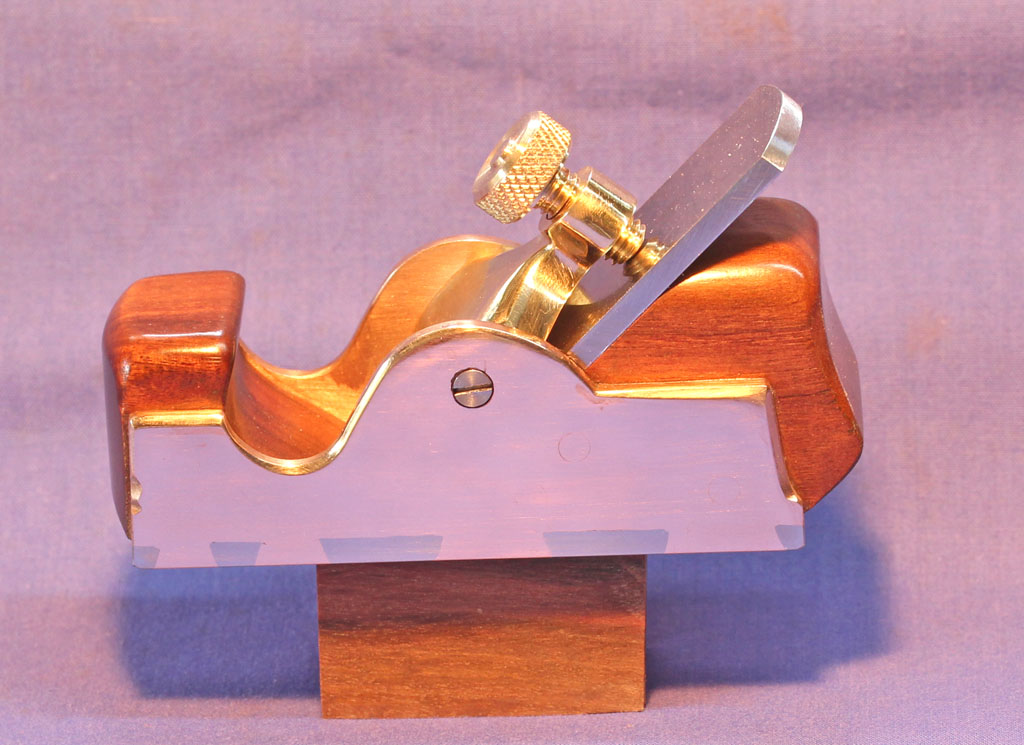Which is: "What are their special attributes?" Or the corollary - what particular tasks were they used for?
I guess the obvious answer would be. "If you don't know, then you obviously don't need one!" But I'm curious - I've done lots of searching, & reading what I can find on the topic, and no-one seems to have a really convincing explanation of why they enjoyed such popularity in the 18th & 19th centuries (much longer than the now better-known & more popular infill bench planes they preceded by more than 100 years), then lapsed into obscurity. It seems their demise preceded that of some of the other planes that lost out to mechanisation (though not sure of that - just an impression I got from a book I read) so it does not appear that was the cause of their near-extinction. Joinery methods did not change profoundly over that time, so it wouldn't seem the jobs they were best suited to just disappeared either?
Bill Carter obviously has a love-affair with them (or is that an understatement?). He shows off a bunch of lovely old examples in a video I watched, but didn't explain what functional attributes makes them so special. He was also demonstrating them on the (long-grain) edge of a board, whereas conventional wisdom (& the name) suggests they were used for trimming across the grain.
I have long harbored a desire to make one, mostly for the challenge - they would have to be the most difficult of the metal-bodied planes to make well. Splitting the sole to achieve a very fine mouth is one added difficulty, but I've managed that with reasonable success on a couple of low-angle planes (didn't quite achieve an invisible join with this one, but it's close):

What had me intimidated for a long time was bending the back accurately, and then scribing & fitting the dovetails to the sole off the bent-up sides - a relatively trivial exercise with separate sides. However after watching Bill do it, & following a couple of recent WIPs, I'm feeling a bit more confident about that now. I've also discovered a source of more malleable brass, which will make the extra peening required on the tails a bit less fraught than if I were forced to use the more brittle grade I've used to date.
Of course I will probably go ahead & make one anyway (or quite likely more than one, since I have not yet made anything I have not thought could be done better 'next time'!), but it would be nice to have a reason or two for my folly other than "because I could"....

Cheers,
I guess the obvious answer would be. "If you don't know, then you obviously don't need one!" But I'm curious - I've done lots of searching, & reading what I can find on the topic, and no-one seems to have a really convincing explanation of why they enjoyed such popularity in the 18th & 19th centuries (much longer than the now better-known & more popular infill bench planes they preceded by more than 100 years), then lapsed into obscurity. It seems their demise preceded that of some of the other planes that lost out to mechanisation (though not sure of that - just an impression I got from a book I read) so it does not appear that was the cause of their near-extinction. Joinery methods did not change profoundly over that time, so it wouldn't seem the jobs they were best suited to just disappeared either?
Bill Carter obviously has a love-affair with them (or is that an understatement?). He shows off a bunch of lovely old examples in a video I watched, but didn't explain what functional attributes makes them so special. He was also demonstrating them on the (long-grain) edge of a board, whereas conventional wisdom (& the name) suggests they were used for trimming across the grain.
I have long harbored a desire to make one, mostly for the challenge - they would have to be the most difficult of the metal-bodied planes to make well. Splitting the sole to achieve a very fine mouth is one added difficulty, but I've managed that with reasonable success on a couple of low-angle planes (didn't quite achieve an invisible join with this one, but it's close):

What had me intimidated for a long time was bending the back accurately, and then scribing & fitting the dovetails to the sole off the bent-up sides - a relatively trivial exercise with separate sides. However after watching Bill do it, & following a couple of recent WIPs, I'm feeling a bit more confident about that now. I've also discovered a source of more malleable brass, which will make the extra peening required on the tails a bit less fraught than if I were forced to use the more brittle grade I've used to date.
Of course I will probably go ahead & make one anyway (or quite likely more than one, since I have not yet made anything I have not thought could be done better 'next time'!), but it would be nice to have a reason or two for my folly other than "because I could"....
Cheers,




































